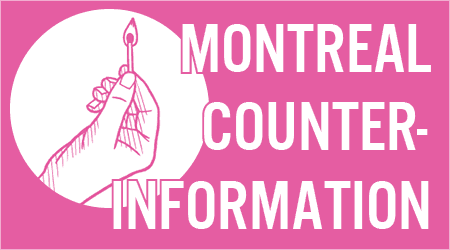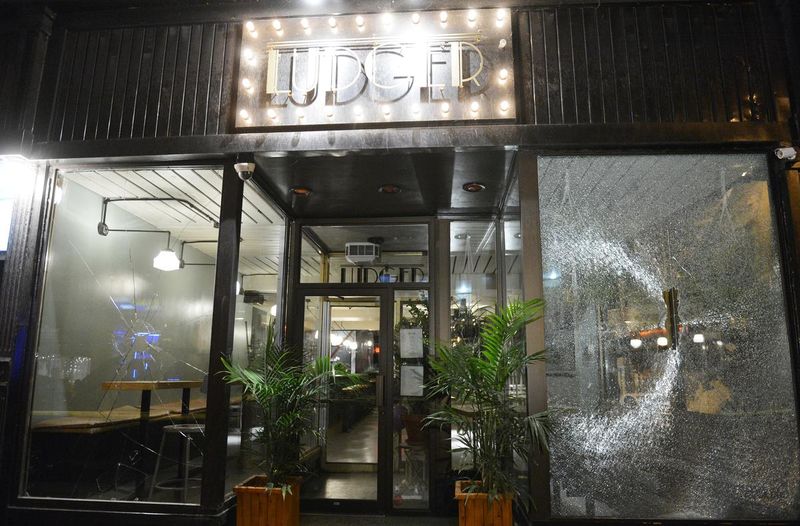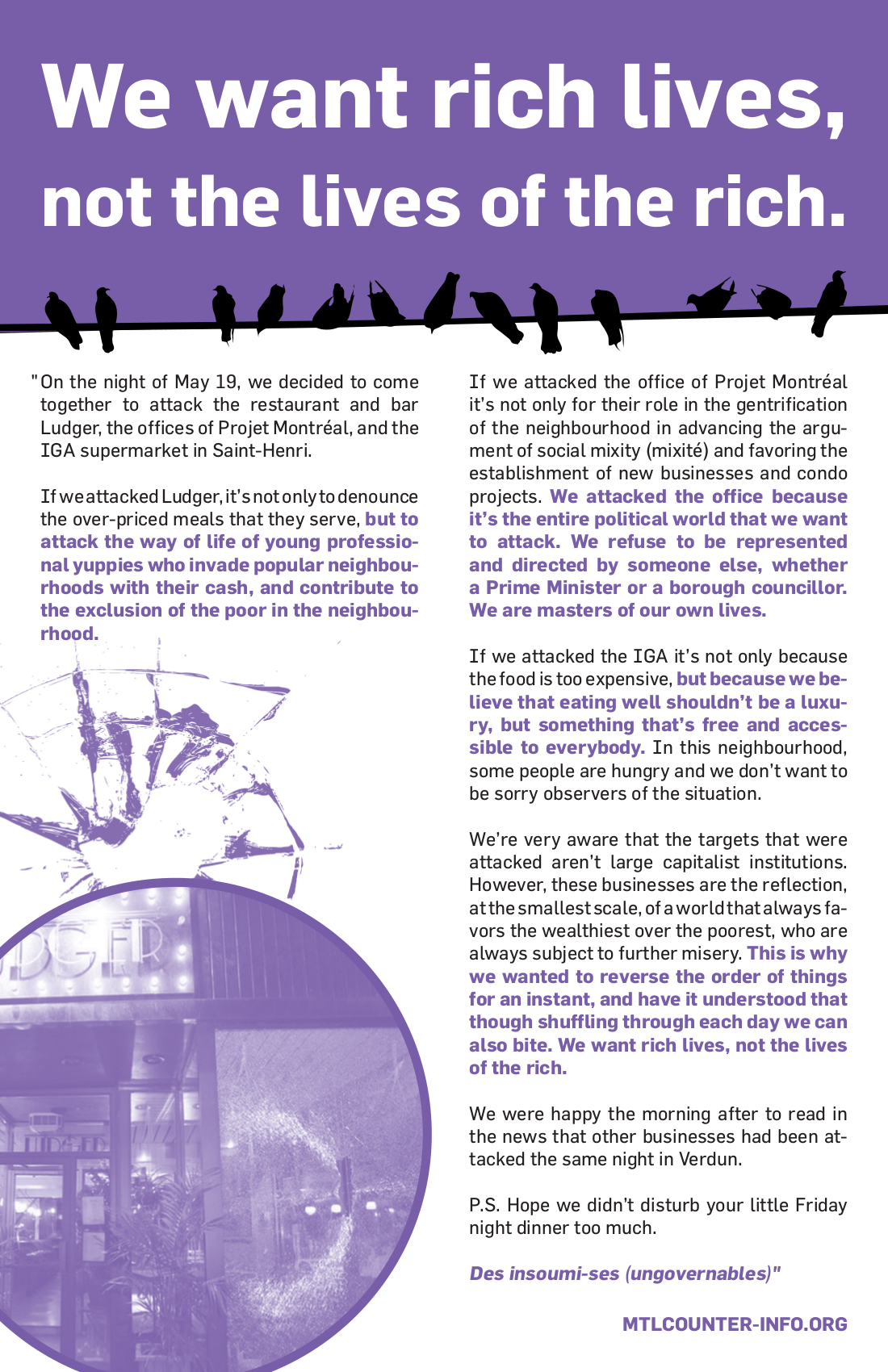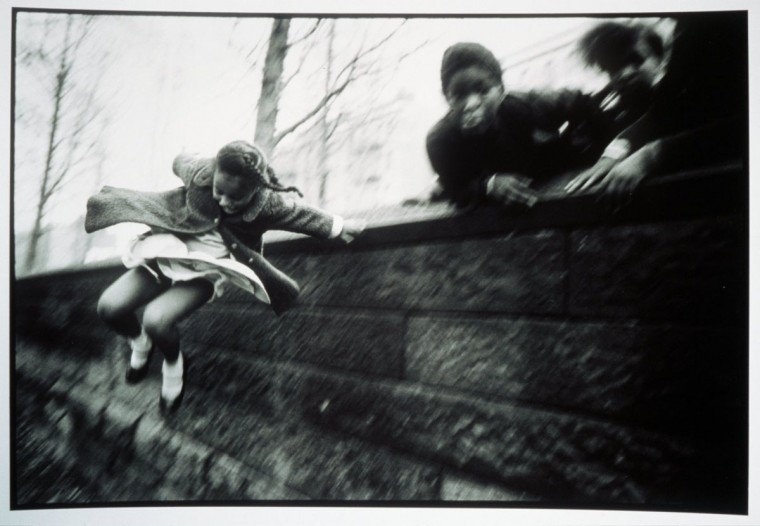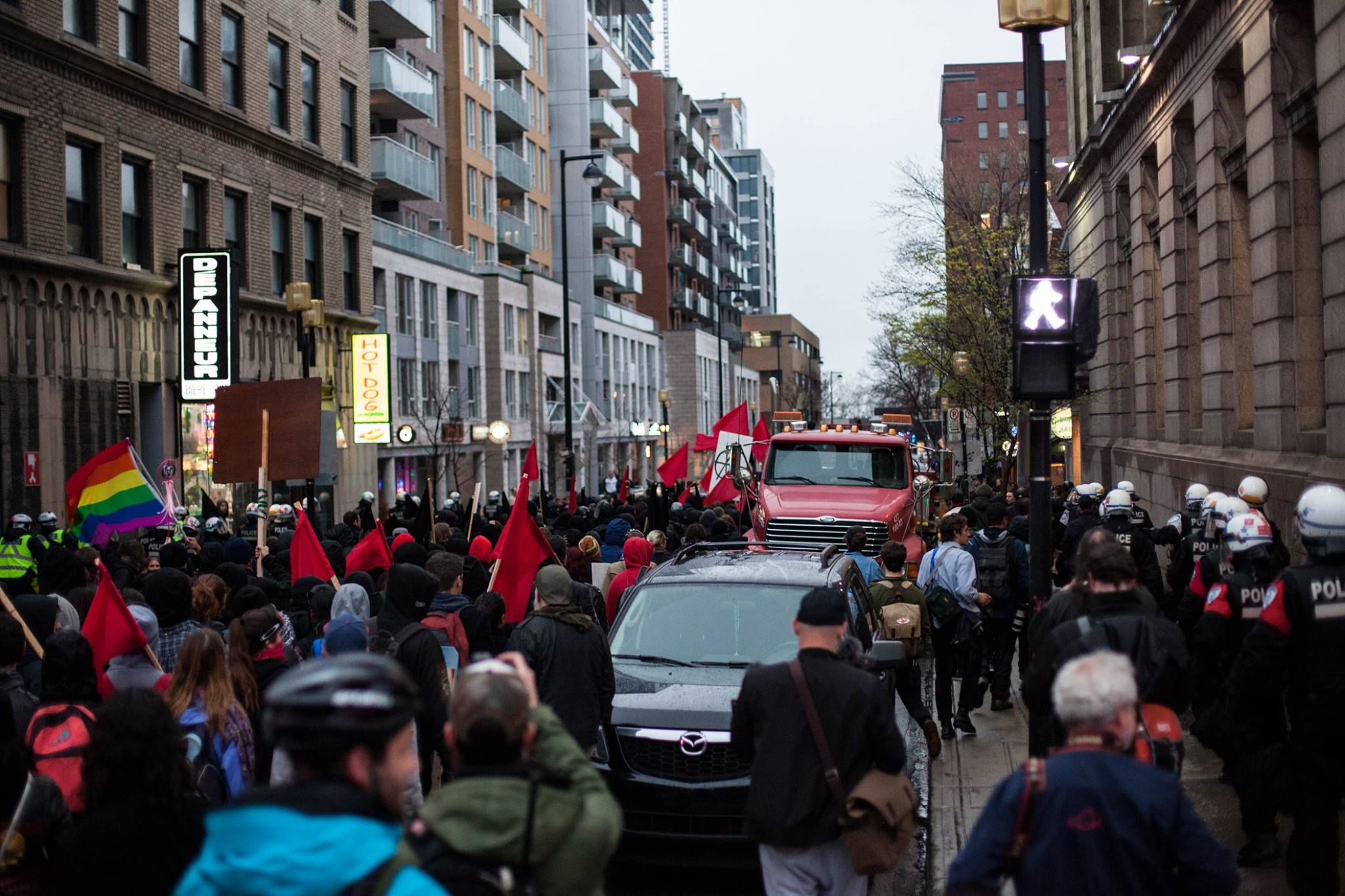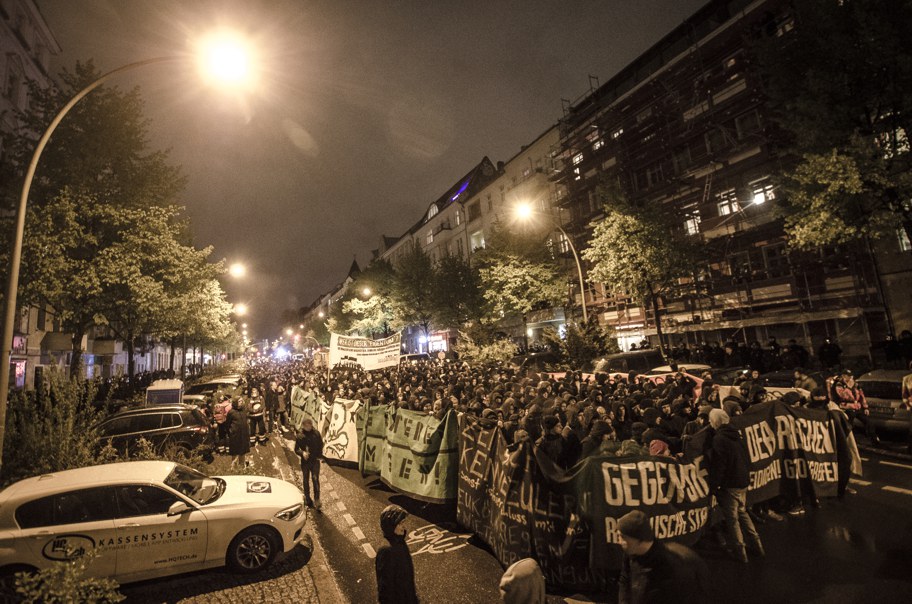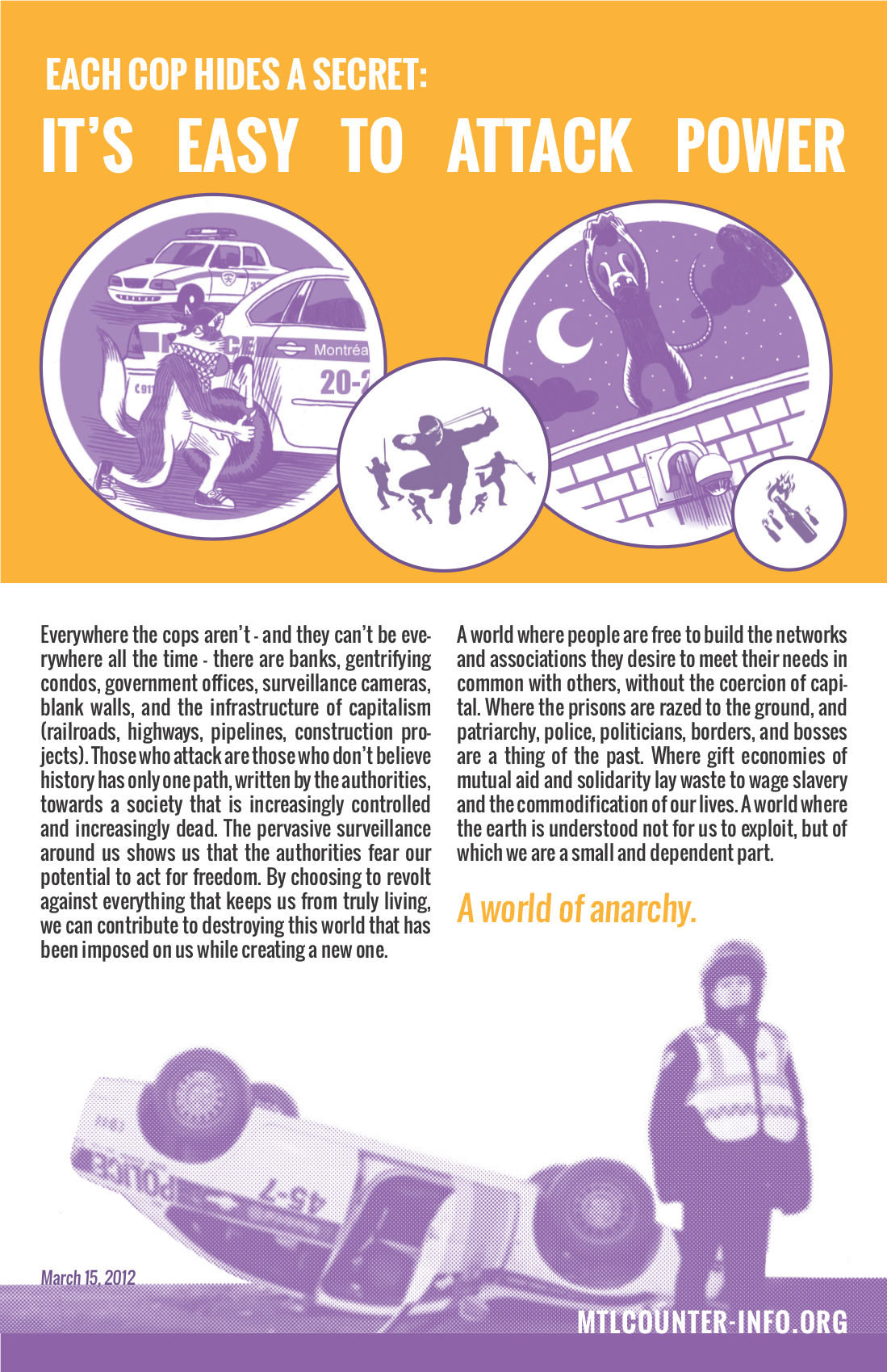
This winter, I visited New York City, where I attended a really inspiring Black Lives Matter demonstration called the People’s Monday March. They employed a tactic I’ll call Business Invasion, which allows a small number of people to deliver a political message in a way that cannot be ignored.
The day after that action, I wrote a reportback, which forms the first half of this article. The second half is reflections on how this tactic could be used by anarchists to fight gentrification in Montreal.
I’m sure that this tactic could be adapted in other ways than the one I’m suggesting here, so I hope that this article catalyzes some brainstorming.
REPORTBACK FROM PEOPLE’S MONDAY MARCH – FEBRUARY 9TH, 2017
I tend to judge the success of a protest by the feeling that the group comes out of it with. Do we come out of it feeling like we were going through the motions, or do we come out of it feeling rared up to fight the power? In the case of this demo in NYC, it was definitely the latter.
The People’s Monday march has been going for over two years. It is organized by a multiracial POC-led group called NYC Shut It Down. It has been held every Monday for over two years, formed out of a desire to maintain movement energy generated by the 2014 unrest following the police murder of Eric Garner. Each march memorializes a different victim of police murder.The first one was held on February 9th, 2015, and I’m told there has been one every single Monday ever since, without fail, no matter the weather. Initially, every People’s Monday march began at Grand Central Station, but over time organizers chose to start holding it in different parts of the city. Sometimes they will go to Brooklyn, Harlem, Queens, etc… and bring street demos with a militant vibe to neighborhoods where protests are rarely held. Part of the thinking behind this is to bring people from the neighborhood into the streets, which apparently has been successful.
I attended the People’s Monday march on March 13th. At 7 p.m. a group of around 30 people gathered in Washington Square park in the middle of Manhattan. The march was unpermitted and the route was not pre-announced, but that didn’t stop the group from immediately seizing the busy streets. Throughout the march, NYC Shut It Down showed their courage and confidence in their own power by not only disobeying police orders, but also antagonizing the police by yelling insults at them from close range. Keep in mind there wasn’t a large crowd to melt back into if a juiced-up cop started ‘roid-raging. These motherfuckers got gonads.
The real reason that I’m taking the time to write this reportback, though, is because this group did something that I haven’t participated in before, which I think could be a useful tactic in many instances. The group invaded first a bar, then a fancy restaurant, then a Whole Foods grocery store with a huge check-out line.
The purpose of going into these places was to force a captive audience to listen to a political message. For this, they used the Occupy Mic-Check tactic. One spokesperson would speak at the top of their voice, and then everyone else would repeat their words as loudly as possible. In this case, the message was as follows (almost verbatim):
“We are here today because Black Lives Matter! We are here today because Black Women Matter! We are here today to remember Denise Hawkins, murdered by police!
Fact 1: Denise Hawkins was an 18-year old black woman from Rochester, New York. Her high school principal said “they never saw her not smiling.” Denise had an 18-month son with her husband, Lewis Hawkins, at the time of her murder.
Fact 2: Her father forced Denise to marry Lewis after she became pregnant. Lewis was abusive and she tried to leave Lewis three times before she was killed. Police had been called before, but they never helped Denise.
Fact 3: On November 11, 1975, Denise and her family were at her cousin’s house for dinner when she and Lewis started arguing. Her cousin called the police.
Fact 4: Denise was holding a knife when Lewis chased her out of the apartment with a chair, threatening to kill her. Seconds after she fled the apartment Officer Michael Leach, who was standing outside, shot in the chest, killing her.
Face 5: Officer Leach claimed he was trapped in a corner unable to move away from Denise and feared for his life, a story disproven by forensic evidence. Officer Leach made a similar claim in 2012 when he murdered his own son. No officer was charged with any crime in the murder of Denise Hawkins.
This is not an isolated incident. In the past 15 years, the NYPD has murdered over 300 people. Of these, over 80% has been black or brown. Of these murders, there have been four indictments, resulting in a total of two convictions, with an end result of ZERO JAIL TIME. If you believe that BLACK LIVES MATTER, we ask that you raise your fist in solidarity.”
In each location, quite a few people present did raise their fists, and the protesters exited the premises, chanting, in one case to applause. It felt validating for more than one reason – on one hand, it felt nice to be supported by members of the public, and on the other hand, it felt good to get in the faces of people who aren’t sympathizers… to force them to listen. In the age of the echo chamber, where social media algorithms allow people to insulate themselves within bubbles filled with like-minded voices, we gotta find creative ways of rupturing them bubbles. Nowadays, when it feels like many liberals believe that the media portrayal of reality is more important than reality itself, it was intensely satisfying to participate in something where the desired result did not happen in the digital landscape but on a human level. This is unmediated propaganda. Dare I call it propaganda of the deed?
So mad respect to the People’s Monday organizers NYC Shut It Down, for showing me what consistency looks like. And let’s be real, if we can’t be consistent, what can we hope to accomplish? Since 2014, every single Monday, rain or shine, they’ve been holding it the fuck down. What can we learn from them? Be bold. Be defiant. Have a specific message. Be loud. Be proud. Have fun. Say it like you mean it. And make it social – after People’s Monday, comrades gather to socialize in a neighborhood restaurant.
I’m told that in the past, the People’s Monday march has occasionally led to clashes with police, but apparently property destruction is not part of the culture. Perhaps smashing windows and slashing tires is viewed as counterproductive, because I’m sure that it’s neither due to moral objection or lack of courage. If the point of militant protest is to deliver a message in a way that can’t and won’t be ignored, they achieve that, perhaps to a greater extent than is achieved by smashing windows.
The People’s March does very much have a ritualistic element to it… which I mean in a good way. As such, every march ends with Assata’s prayer, with all participants joining hands and chanting together: “It is our duty to fight for our freedom. It is our duty to win. We must love and protect each other. We have nothing to lose but our chains.”
I think a weekly ritual could serve the purpose of movement-building well. Public events give people an opportunity to meet each other, but we all know that activists are slow to bestow trust. People need to get familiar with each other before they can work together. A smaller group makes it easier for folks to get to know each other.
Also, I really like actions that are demanding justice on autonomous terms rather than reacting to an injustice. I think it’s a mistake to view outlying incidents such as police murders as the actual problem, rather than symptomatic of a more deeply oppressive normalcy (i.e. self-policing, surveillance, prison slavery, wage slavery, patriarchy, and the list goes on). Rage at the abuse of power can conceal the heart’s true rage, the rage born of the heart’s desire for freedom – the rage against oppressive power itself.
A TACTIC TO FIGHT GENTRIFICATION?
I said at the beginning of this article that I thought that this tactic could be interesting in the struggle against gentrification in Montreal. Here’s what I mean: if anarchists in a given neighbourhood, say St. Henri or Hochelaga, made a habit of invading gentrifying businesses. Perhaps this could be on a weekly basis, especially at first, to popularize the tactic, but if the idea catches on, maybe it could be used in a more impromptu way. For example, if a bunch of anarchists are in the same place at the same time, say for a show, event, demonstration, etc., maybe an Invasion could occur almost spontaneously. If we can have fun with it, perhaps by incorporating bizarre attention-getting activities, perhaps invading boutiques could be become something of a sport. Come to think of it, the Montreal Anarchist Bookfair is coming up…
When I imagine this, I’m not thinking about invading a pretentious cafe or trendy bar and yelling “Fuck you, Yuppies!” That sort of approach is more likely to make people defensive than catalyze critical thought. I think it’s better to meet people where they’re at. Let’s not assume that gentrifying customers are aware of the consequences of their consumption. Let’s not tell them “get the fuck out”, but instead explain how the process of gentrification works, what role they play in it, and why we oppose it. It is likely that customers attracted by the trendiness of an area have a certain appreciation of what makes a neighbourhood special. If they could understand that they are slowly poisoning the well that they want to drink from, perhaps they’ll change certain habits.
I think it would be preferable, actually, to amuse customers rather than insult them. In entertainment, there is a natural affinity between performer and spectator. This is a relationship dynamic that is culturally understood, something that consumers are comfortable with. The ideal would be to make the patrons laugh. When someone laughs, they drop their guard. They become receptive.
The mood of the People’s Monday March was sombre and resolute, as was appropriate, given that it is meant to mourn and honour the dead, as well as protesting the racist violence of the police. I think that anti-gentrification Invasions could afford to be more light-hearted and irreverent in their approach.
The fact is that urban consumers have lots of choices when they’re deciding where they’re going to spend their money. If enough people can be persuaded not to frequent a particular business, it may have to close. Let’s keep in mind that in the earlier phases of gentrification, it is often independent businesses that are opening up shop. Likely, they are not turning a profit in their first year, or maybe even their first few years. Even if they are owned by someone with deep pockets, if they aren’t profitable, the owner will eventually have to close them down. Maybe it would be wise to target specific businesses rather than Gentrification, which can be seen as immutable force.
Also, for hipster venues, remember being “cool” is part of their business model. Try thinking about what is cool for a hipster or yuppie. What you can do to undermine that? If activists can make a venue uncool in the minds of its target demographic, its bottom line will take a hit.
A successful campaign to shut down a business could also ward off would-be gentrifiers, as word could get around about this kind of thing – maybe forcing one boutique to close would keep three new ones from opening up.
Of course, this tactic doesn’t directly address the bigger problem – condos, speculation, raising property values and rents, etc. I offer these thoughts knowing full well that effectively fighting gentrification will require a prolonged, multi-pronged effort from deeply-committed community members.
That said, to be successful, a movement must conduct itself as its goals are attainable. “Fighting Gentrification” is not a strategy. A movement needs attainable goals – goals that are measurable. Shutting down a specific business is certainly possible – and shame on you if you doubt me! How are we going to smash the state if we can’t even smash a yuppie boutique?
To render victory imaginable, there’s no better propaganda than victory. The small triumph of shutting down one hipster bar, dog spa, or luxury shop will give participants in anti-gentrification struggles a taste of their own power.


